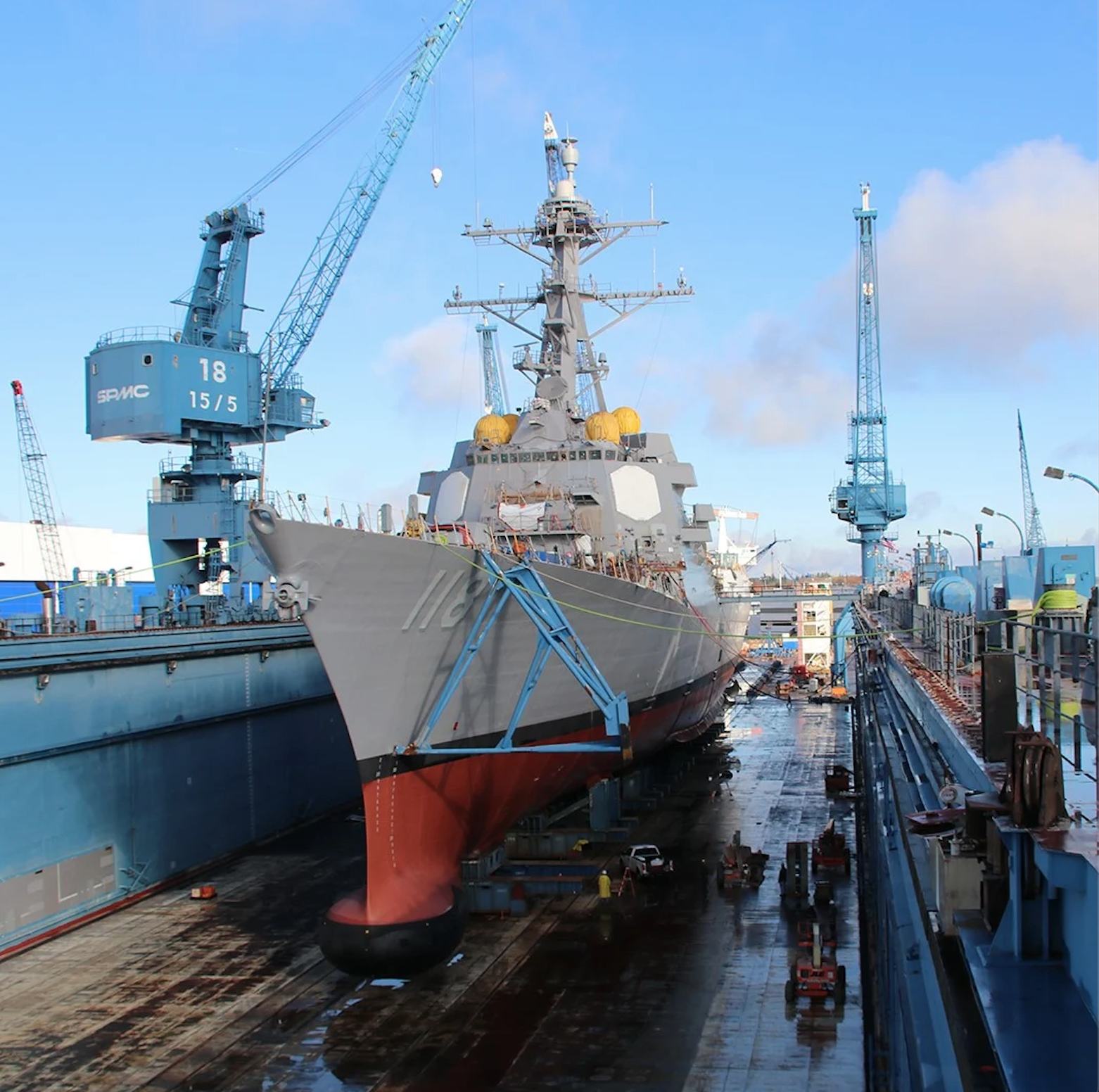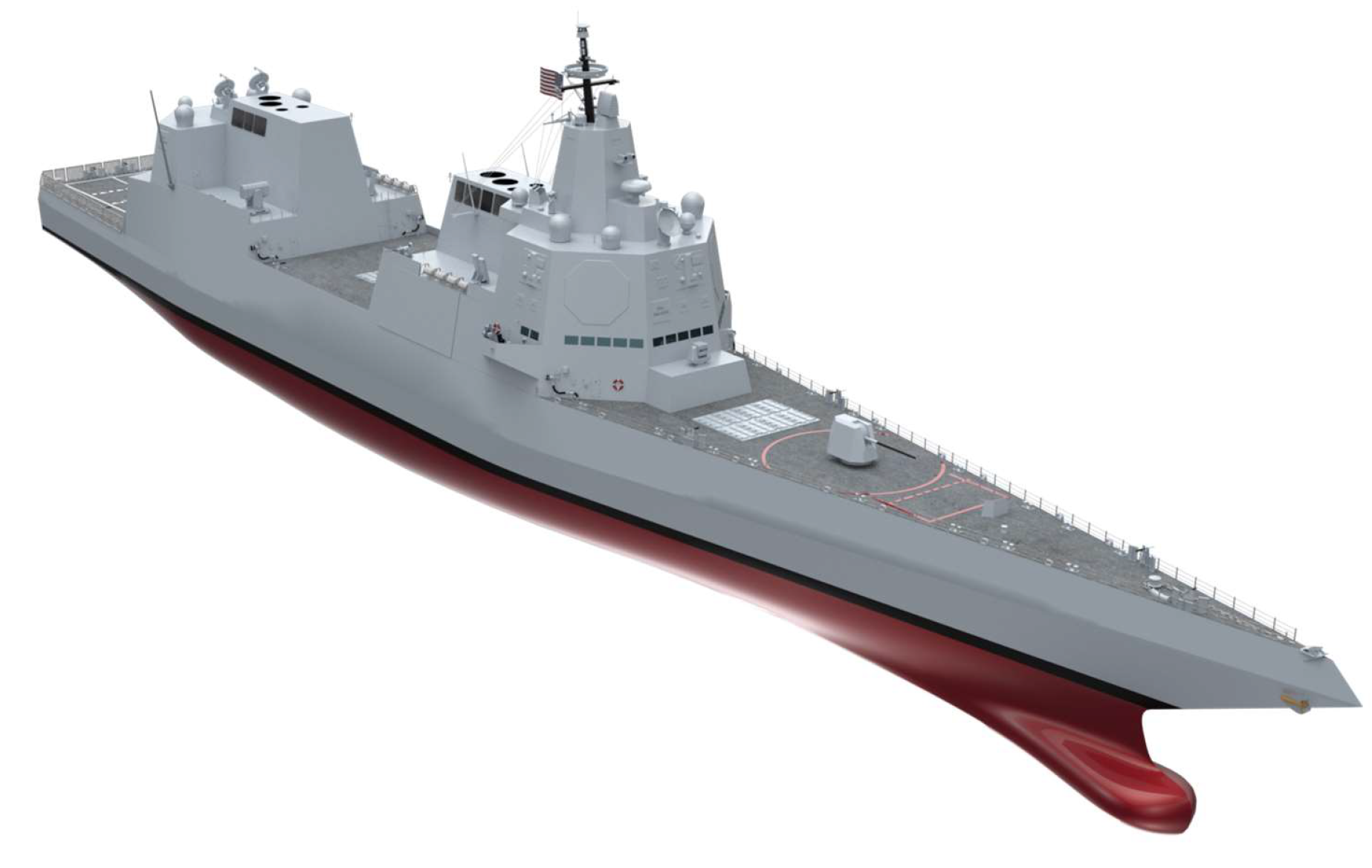
The Navy is committed to buying two Flight III Arleigh Burke-class destroyers per year in tandem with developing its new DDG(X) program, the top surface warfare requirements officer said Wednesday.
While the first priority for the Navy’s surface warfare division director on the chief of naval operations’ staff (OPNAV N96) is delivering the Arleigh Burke-class Flight III destroyers on time, the second priority is seeking a two-per-year cadence for large surface combatants.
“My next priority is related to the first and that is to budget for and build two large surface combatants a year, at a minimum. Two ships a year with a 35 to 40-year service life results in an objective force of 70 to 80 large surface combatants in our navy,” Rear Adm. Paul Schlise said during a speech at a symposium hosted by the American Society of Naval Engineers.
“And two ships a year provides the Navy with the multi-domain dominance it needs to support the security and prosperity of the United States and it ensures the health of our large shipbuilding industrial base, something that I cannot stress enough,” he added. “Strategic competition requires industrial might and we must take steps to ensure this capability is sustained.”
Schlise’s remarks come ahead of the Fiscal Year 2023 budget submission, which is expected to include another multi-year procurement plan for the Navy’s Flight III Arleigh Burke-class destroyers.
“As N96, I will continue to make the case for our surface shipbuilding priorities to include two large surface combatants a year,” Schlise said today. “And we need to transition from Flight IIIs to DDG(X).”
Schlise described the Flight III destroyers as a “bridge” to DDG(X), and echoed the Navy’s position that it needs a new hull for the future destroyer program because there is no margin left to add new systems to the Arleigh Burke hull.
“Jack Lucas and the Flight IIIs that follow are going to be incredibly capable ships and they will pack considerable combat punch, but they are a bridge to the future. They are not the future itself,” Schlise said. “While they represent a superb effort by the shipyards, the acquisition community, and the design and engineering community to fit as much capability as possible within the DDG-51 hull form, there simply isn’t any more margin for growth. Remember, this hull was designed in the 80s.”

The Navy wants the DDG(X) platform to fire both hypersonic weapon and lasers more powerful than what the service currently fields and is planning for margins that would allow it to upgrade systems, USNI News reported last month.
“With DDG(X), we’re designing in margins – space, weight, power and cooling, or SWaP-C – to accommodate future capabilities, capabilities that are under development today and whose will be proven through intense land-based testing and on other platforms already in service,” Schlise told the ASNE symposium. “Were we to wait on full maturation of every one of these future capabilities, we might not be bending metal on DDG(X) for decades, and we’d be marking time while our adversaries move forward.”
“DDG(X) is a culmination of lessons learned from past programs,” he continued. “Rather than tying the success of DDG(X) to developmental technology, we’re using known, mature technologies on a flexible platform that can be upgraded for decades to come, as the technology of tomorrow becomes more proven and mature. This is an evolutionary ship, not revolutionary.”
While making the case for the two-per-year destroyer cadence, Schlise referred to recent remarks from Rep. Mike Gallagher (R-Wis.), who sits on the House Armed Services seapower and projection forces subcommittee. Gallagher, a former Marine, called for the Navy to ask for two large surface combatants a year for a decade as the service shifts from the Flight III destroyers to DDG(X).
“So what I propose is the department should commit to funding two large surface combatants a year for – let’s say 10 years – during which the transition from Flight III … to DDG(X) occurs,” Gallagher told the Surface Navy Association’s annual symposium last month. “Congress in turn will commit to fully funding the DDG(X) program and from there, the Navy will need to provide a plan to both Congress and industry to move forward from two Flight IIIs per year to two DDG(X)s per year over a three to five year transition. I know that the next-gen DDG won’t be online for a 2020s fight, but my point here is you can build a battle force 2025 without neglecting our longer-term modernization priorities.”





